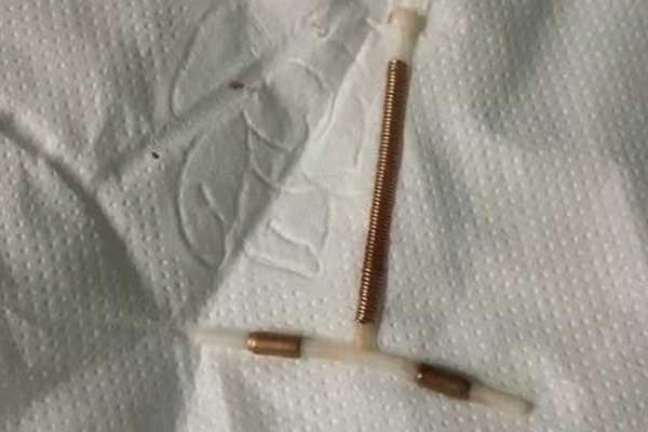Hayane Beatriz intrigued the nets by pulling out the device while trying to pull out a tampon. We spoke to an expert to understand the case
The fear that the body will not adapt to a new contraceptive method haunts many women during family planning, especially IUD users. Now, imagine: you’ve finally made up your mind place the device and, after a few days, going to the bathroom, realizes he accidentally removed it while trying to remove a tampon!
Well … Who lived this “nightmare” was the 19 year old Hayane Beatriz, from Maranhão. The housewife went viral on social media after sharing a video showing the device – already out of her body – on a paper napkin. “I went to get my tampon out and got the IUD out,” he wrote in the post.

In the video comments and in a second publication, Hayane explained to curious netizens of the case that it had been less than a week since the device was placed and that, on the day of the accident, it was the first time he had used a tampon.
@hayanebeatriz29 Que odio de mim 😭😭😭#fyyyyyyyyyyyyyyyyyyy #viral #diu #odio
“I went for a swim in the pool and I think the tampon fell off. I was worried, so I went to see if it was still inside me,” she commented. ” Then I saw a rope, and when I pulled it, all of this happened. In my case it didn’t hurt “he said in another post.
Hayane also commented on it had not yet received all the instructions regarding the contraceptive method from her doctor, since she didn’t even have her first follow-up transvaginal ultrasound.
Could the IUD have come out on its own?
To try to understand the case, we spoke with Carlos Moraes, gynecologist and obstetrician of the Santa Casa, Albert Einstein, São Luiz and Pro Matre hospitals, and a member of the Brazilian Federation of Gynecology and Obstetrics Associations (Febrasgo). First, the expert explains it the IUD is quite effective as a method of contraception, but there are, yes, small risks of its expulsion or movement by the body, especially when it comes to the copper device, the same used by Hayane.
“In general, the copper IUD is the type that makes the patient bleed the most. due to increased flow and menstrual cramps, the device may fall out of place or even be thrown out during menstruation“, he says.
The patient will not be able to self-identify if the IUD is out of the correct position. This is a problem that should always be evaluated by the gynecologist when returning to the office. “After insertion, the woman is asked to follow the ultrasound examination at certain times to ensure that the IUD is well positioned”explains.
To give you an idea, more recent data from the North American study project CHOICE, who studied the contraception of more than 5,000 adolescents between the ages of 14 and 19, identified an increase in device ejection rates (18%) in this age group, compared to older women. Furthermore, the risk of expulsion with the copper IUD was three times higher in adolescents, while with the hormonal IUD it was twice as high.
Are there any chances of the IUD being extracted accidentally?
Those who use this method of contraception know that the anatomy of the IUD has a small thread at its end, so that it can later be removed by the doctor. Carlos explains that in the end there really is a very small chance that the patient may mistakenly pull this thread when manipulating inside the vaginal canal.
“Therefore, in the moment following the insertion of the IUD, it is usually suggested to the patient not to use tampons or menstrual cups”, adds the gynecologist.
In her second video, Hayane vents: “The worst part is, I can’t even reuse the IUD, it’s from here to the garbage.” So it is, once the IUD has been accidentally expelled or removed, the woman can reinsert it, but not with the same device.
“The inserted IUDs are sterilized, unlike the expelled ones, in which there is no cure with asepsis. Thus, it is possible for the patient to reintroduce another new IUD without problems,” concludes Carlos.
Source: Terra
Benjamin Smith is a fashion journalist and author at Gossipify, known for his coverage of the latest fashion trends and industry insights. He writes about clothing, shoes, accessories, and runway shows, providing in-depth analysis and unique perspectives. He’s respected for his ability to spot emerging designers and trends, and for providing practical fashion advice to readers.








